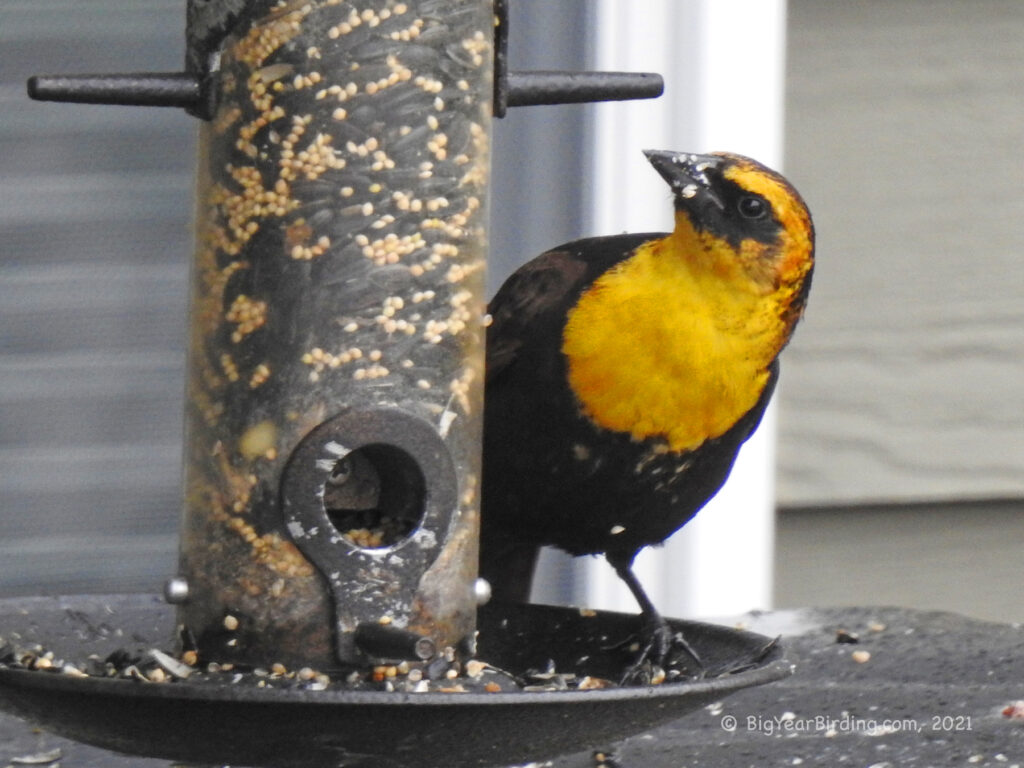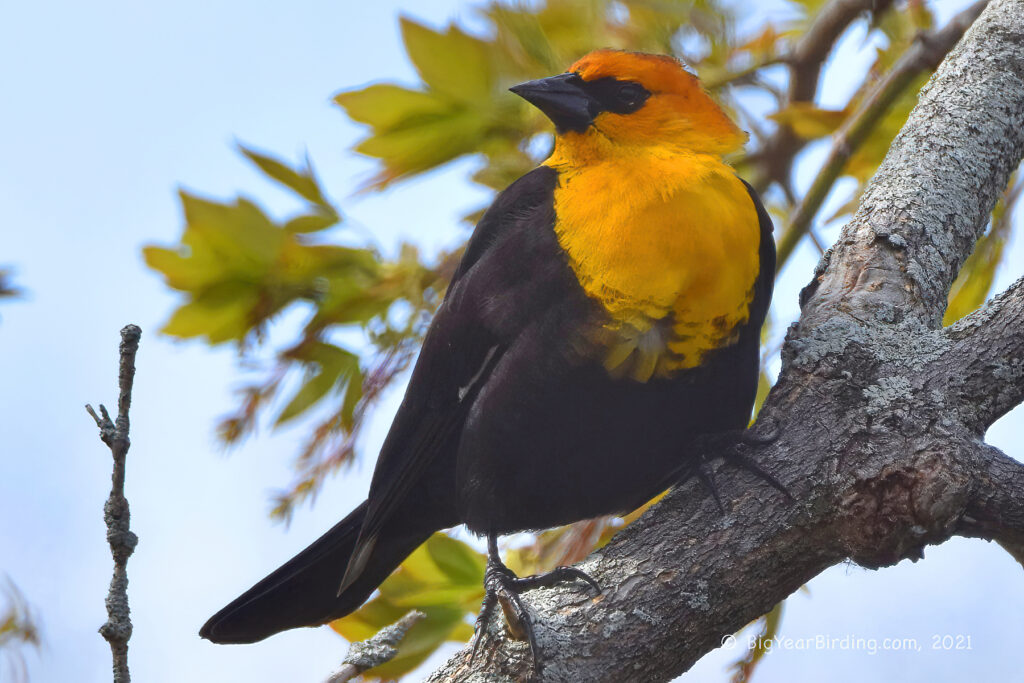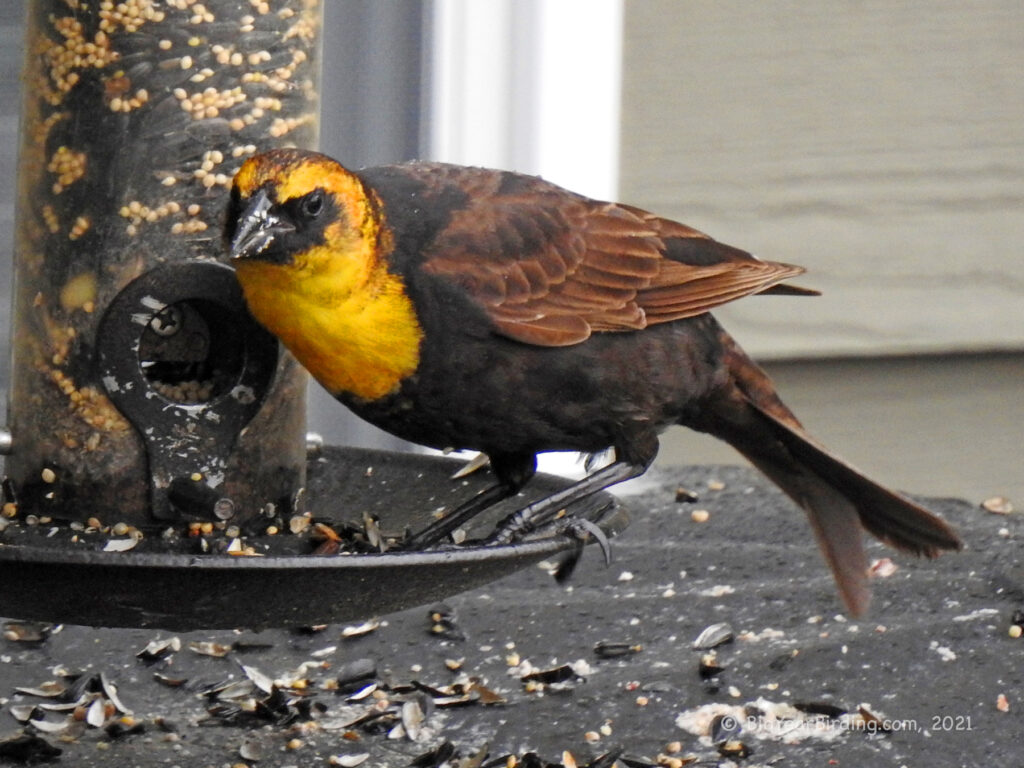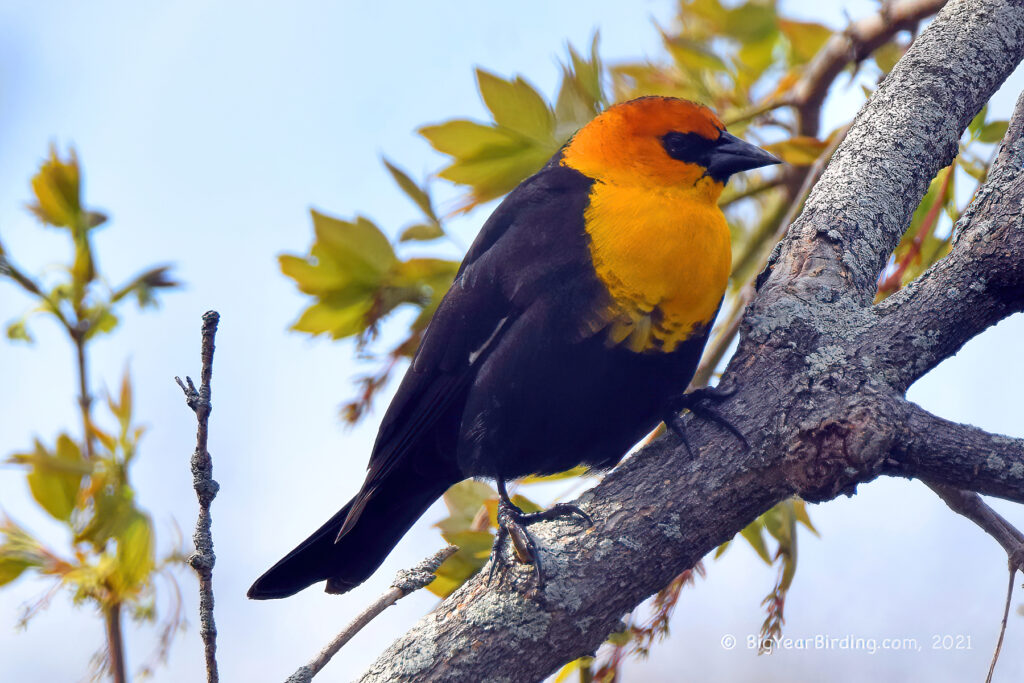The Yellow-headed Blackbird (Xanthocephalus xanthocephalus) is a striking bird species that is found in North America. This bird is easily identified by its bright yellow head and neck, which contrast sharply with its black body. The male has a total length of approximately 9-10 inches and a wingspan of 14-16 inches, while the female is slightly smaller, with a total length of around 7-8 inches and a wingspan of 12-13 inches.

In terms of weight, the male Yellow-headed Blackbird is larger than the female, weighing in at an average of 2.4 ounces, while the female weighs around 1.5 ounces. Their striking yellow head is the most distinctive field mark of this bird species, which contrasts against their black body, white wing patches, and a distinctive white patch on their wings.
Yellow-headed Blackbirds breed in the western United States and southern Canada, and they migrate south to central Mexico during the winter months. Their migration pattern is influenced by changes in the weather and the availability of food. During the breeding season, they prefer to inhabit wetlands, marshes, and other water-rich environments with tall grasses, cattails, and reeds, where they can build their nests.
In terms of their diet, Yellow-headed Blackbirds are omnivorous birds that feed on insects, seeds, and small aquatic creatures. During the breeding season, they feed their young with insects and spiders. They also eat agricultural crops such as rice and wheat, which sometimes leads to conflicts with farmers.

Conservationists have expressed concern about the declining populations of Yellow-headed Blackbirds due to the loss of wetland habitat, changes in agricultural practices, and climate change. Efforts are underway to protect and restore wetland habitats, provide nesting sites, and reduce the impact of pesticides and other pollutants on these birds. By taking these steps, we can help ensure that the Yellow-headed Blackbird continues to thrive and beautify North American wetlands with its distinctive colors and songs.


